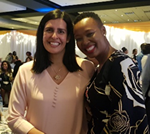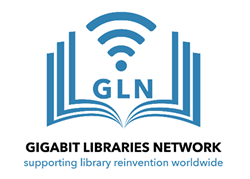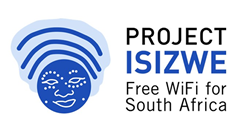|
Dynamic Spectrum Alliance Q3 2019 NewsletterKeeping you updated about our activities! Here we highlight our latest work and focus on areas where we are empowering the next wave of spectrum access. |
||||
|
Introduction from Martha Suárez Welcome to the Q3 Dynamic Spectrum Alliance newsletter! The DSA Global Summit in June has been followed by a very busy few months for the DSA. We are very focused on creating positive relationships with governments and regulators that will facilitate new laws and regulations for more efficient spectrum utilization. Therefore, I have travelled a lot recently to meet with existing and future partners and we are excited to share the progress that has been made so far. This newsletter will highlight our actions throughout Q3, but please follow us on social media and keep an eye on our website to be updated about the most recent DSA activities. The U.S. Trade and Development Agency (USTDA) awarded a grant in August to support a project led by DSA member Adaptrum to help improve internet access to rural areas of South Africa through several TV White Space (TVWS) deployments. The consortium consists of South African and US partners including Adaptrum, International Data Corporation (IDC), Microsoft, Project Isizwe and WAPA. Find out more here. South Africa was the first country in Africa to publish a TVWS regulatory framework and we are looking forward to seeing the progress of this project to help close the digital divide and the upcoming regulations describing the conditions for the TVWS database operation.
Have you heard about the Microsoft Airband Initiative? I had the opportunity to attend the Airband Summit in Seattle in August and to interact directly with ISPs, manufacturers and many companies that are enabling the ecosystem for broadband worldwide. It is really inspiring to see all the different use cases that are being promoted for healthcare, education, agriculture and in general for digital inclusion. In this summit, I was part of the panel “Working with Governments and Regulators to Bridge the Digital Divide” and had a great discussion with Claude Aiken from WISPA, Dudu Mkhwanazi from Project Isizwe and Paula Boyd and Jeffrey Yan from Microsoft. I have also attended several other events throughout September, including the 9th International Spectrum Congress in Colombia, the 6th Annual Latin America Spectrum Management Conference, the ITU workshop about Community Networks in Peru and the 8th Annual Americas Spectrum Management Conference in Washington. These opportunities have brought more chances to connect with spectrum regulators and you, our members, to continue promoting spectrum sharing. Keep an eye on our blog page for regular updates on all of our activities! Finally, I have also been pleased to witness the achievement of an important milestone for CBRS last month. The progress that has been made is bringing the industry closer to the stage of full commercial deployment, and the most recent Public Notice on Initial Commercial Deployments in CBRS is an example of this. We hope to see CBRS, as well as the many other spectrum sharing technologies the DSA supports, to become increasingly available as we move towards 2020. Thank you for everything that you do to support the DSA in all of its work. I look forward to seeing what the rest of 2019 will bring for the Alliance and its members.
President of the DSA Martha Suarez |
||||
|
Upcoming
events
Africa Tech
Smart Cities Summit |
||||
|
DSA in the News Spectrum sharing gains momentum RCR Wireless, 9 July 2019 Left and Right Agree — C-Band Spectrum Should Be Auctioned Off Inside Sources, 18 July 2019 Final CBRS SAS test reports are complete RCR Wireless, 19 July 2019 From November Argentina will have the regulatory framework ready to create a “rural digital highway” Valorsoja.com, 1 August 2019 DSA proposes an innovative alternative to achieve rural connectivity BCR News, 2 August 2019 Producers will bring broadband to all of Argentina's rurality CAMPOLITORAL, 5 August 2019 Commercial TV white-spaces roll-out gets under way Tech Central, 5 August 2019 Dynamic spectrum access is no longer merely theoretical, says new DSA president PolicyTracker, 6 August 2019 TV white space project launched to solve rural internet woes EE Publishers, 8 August 2019 Bringing affordable Internet to rural South Africa My Broadband, 18 August 2019 How Dynamic Spectrum Access Can Accelerate 5G Deployment AGL Media, 3 September 2019 |
||||
|
Regulatory Affairs Work Group (RAWG) Update As a cross-industry organization, the Dynamic Spectrum Alliance works to engage with regulators and government officials to promote the adoption of legal and regulatory frameworks that facilitate dynamic access to radio spectrum. The Regulatory Affairs Work Group continues to develop policy positions for ratification by the Dynamic Spectrum Alliance, draft documents for submission to regulatory agencies and develop high-level positions on critical issues related to dynamic spectrum sharing. Recent updates include:
Any Dynamic Spectrum Alliance member can participate in the Regulatory Affairs Work Group, so if you are interested in this area then please contact admin@dynamicspectrumalliance.org. |
||||
|
Member/Partner Updates In this section, we share updates and news from DSA members around the world, if you have an update that you’d like to be included in the next newsletter, please email dsa@proactive-pr.com. |
||||
|
The University of New Hampshire Broadband Center of Excellence (BCoE) has created a checklist for individuals to use in assessing their vulnerability to threats originating from their use of the Internet wherever they are linked — home or public place. “At a time when hackers create chaos and are able to gain remote control of automated cars or in-home baby monitors, it is incumbent for us all to take responsibility for Internet safety and not passively trust governments, organizations and service providers to do it for us.” BCoE Executive Director Dr. Rouzbeh Yassini And the effect of broadband continues to grow. At the end of last year, it was widely reported that more of us than ever have Internet access with more than 50% of the world’s population now online. Add to that the 125 billion Internet of Things (IoT) devices expected by 2030 and the breadth of available targets of vulnerability becomes apparent. This BCoE document provides a self-assessment of how one configures, maintains and uses Internet-connected devices, computers, applications and networks under their direct control in a grouping called the Digital Home while providing cautionary warnings of areas outside the Digital Home that we like to call the Internet Wilderness. Here's the checklist in the form of a survey. |
||||
|
The Microsoft Airband Initiative finalized a partnership with Servtek, a Colombia-based provider of satellite television and telecommunications services. The partnership will expand broadband access to unserved areas across rural Western and Northern Colombia, covering over 4,000,000 people. Using primarily TVWS and affordable last mile technologies, Servtek plans to deliver internet access and IoT applications to local universities, schools, businesses, farms and public sector customers. This is the second commercial partnership in LATAM! Within the United States, Airband announced two new commercial partnerships, bringing our national commercial deployment presence to 24 states.
We’ve also partnered with Sacred Wind Communications, which will extend broadband access to unserved, predominantly Tribal communities in New Mexico through a combination of techniques and technologies, including the use of TV white spaces. This partnership has a projected population under coverage of over 48,000, all of which are rural unserved (per the FCC). To expand the value of our Airband Commercial Partnerships, Microsoft announced an expansion of our longstanding work with the VA, in the form of an Airband partnership to bring connectivity to many Veterans living in rural towns and communities. Through the partnership, we’ll help the VA identify communities with Veterans in need and work with our internet service provider (ISP) partners across the nation to bring broadband services to those regions. We’ll also provide the Veterans in these newly connected communities with digital skills training so they can take advantage of the tools and services connectivity enables, including critical telehealth services provided by the VA. Read more about this partnership in the Microsoft On the Issues Blog. |
||||
|
The past quarter has been a busy few months for Adaptrum on both the product and project side.
Also, Adaptrum announced efforts with a specific focus on addressing the digital divide with across Africa. These include an integration project with partner BRI energy to develop a self-powered TV White Space solution. Furthermore, the US Trade & Development Agency just announced funding to support an Adaptrum-led project working alongside a consortium of ecosystem partners to deploy TV White Space across South Africa. |
||||
The Gigabit Libraries Network (GLN) has announced the receipt of a National Leadership Grant of nearly $250,000 awarded to Califa from the Institute of Museum and Library Services (IMLS) and subawarded to GLN to expand the Libraries WhiteSpace Project for disaster response and increased community resilience. 2017 was the most costly U.S. disaster year on record. Climate change predicts extreme weather related disaster events will only increase both in severity and frequency. Library facilities have shown to be effective resources during disaster, and almost uniquely in providing access to information and communications technologies (ICT’s) as so-called “second responders.” “It is only natural that libraries and other anchor institutions seek to provide robust backup communication networks, that we’re calling “SecondNets,” says project director, Don Means. “Equipping these second responders with inexpensive and reliable wide-area wireless communication systems will strengthen community resilience in disaster response and further reinforce the library’s emerging role as community tech and innovation hub.” A distributed development group, anchored by four public libraries located in Millinocket, Maine; Milledgeville, Georgia; State College, Pennsylvania; & Beatrice, Nebraska, is being supported by the grant to upgrade their existing TV Whitespace (TVWS)/Wi-Fi systems with backup power and portable hotspot units for rapid redeployment. They will also develop partnerships among their area schools, clinics, colleges and other second responders, in disaster planning and for potential direct wireless connections via TVWS systems. The project builds on the 3-year old Libraries Whitespace Project advocating that libraries explore using TVWS/Wi-Fi equipment to support remote fixed / portable library hotspots at new fixed locations and/or temporary events in their communities to expand daily access and inclusion through strategic technology integration. Find out more here. |
||||
In July, Michael Calabrese (Director, Wireless Future Project Open Technology Institute at New America) testified before the United States House of Representatives Committee on Energy and Commerce Subcommittee on Communications and Technology at the hearing on “Our Wireless Future: Building a Comprehensive Approach to Spectrum Policy”. Here is an excerpt from his testimony: “There are two fundamental reasons why it’s critical that substantially more mid-band spectrum is made available on a licensed, unlicensed and dynamically shared basis. First, we all need three paths to access spectrum because the world’s most robust and productive 5th generation wireless ecosystem will not be built out by mobile carriers alone or solely with exclusively licensed spectrum. America’s “5G” wireless ecosystem will rely on a combination of national or regional carrier networks for truly “mobile” connections and a far larger number of complementary, high-capacity and customized networks deployed by individual business firms households to meet their particular needs at a lower cost. Today Wi-Fi makes internet access and broadband data on smartphones and laptops faster and far more affordable. Wi-Fi already carries between 70 and 80% of all mobile device data traffic. In a 5G world, indoor and customized small cell will enhance the ecosystem and fuel advanced applications such as home and industrial IoT, virtual reality and near-real time interactive video. This distinction between spectrum for coverage (which fits the traditional cellular licensing model) and spectrum for capacity in localized areas (which is the rationale for unlicensed and lightly-licensed, shared spectrum) is even more relevant for 5G in light of the fact that an increasing share of mobile device data traffic (more than 80 percent) is consumed indoors, on a nomadic and not mobile basis. A second fundamental reason to make mid-band spectrum available on a licensed, unlicensed and shared basis is that a guiding goal of the Communications Act is to “encourage the deployment on a reasonable and timely basis of advanced telecommunications capability to all Americans.” While there are heated disagreements about progress towards this goal, there is no question that we can and must do better in addressing the rural and low-income digital divides. Rural, small town, Tribal and historically marginalized communities are most likely to find themselves on the losing side of the digital divide. The FCC’s most recent Broadband Deployment Report, which tends systematically to overstate the availability of broadband, reported that “the gap in rural and Tribal America remains notable: over 26% of Americans in rural areas and 32% of Americans in Tribal lands lack coverage from fixed terrestrial 25 Mbps/3 Mbps broadband, as compared to only 1.7% of Americans in urban areas.” Because of the enormous costs of building out geographically extensive 5G networks, national and regional carriers will focus initially on the more densely-populated urban and affluent suburban areas with the largest returns on investment. While 5G networks may not reach rural, small town or even many exurban communities for many years, smaller and local providers can more rapidly extend high-capacity and more affordable fixed broadband access to these underserved areas.” Read the full testimony here. |
||||
|
To connect the rural unconnected to affordable internet is not so much a technical problem but more that of economics. For the large mobile operators, it is of no economic value to connect people who live away from the main rural highways in sparsely populated areas, even as a loss-leader project. Technologically speaking it is not much of a challenge. Using TV white space (TVWS) in the 470-692 MHz frequency band on a secondary basis has proven an excellent technical solution, but the economics of the system are yet to be tested and that is what the new Wireless Access Providers Association (WAPA) project is about. A consortium consisting of South African and US partners including Adaptrum, International Data Corporation (IDC), Microsoft, Project Isizwe and WAPA, together with the United States Trade Development Agency (USTDA) are working on a feasibility study. The project aims to demonstrate the technical, socio-economic, and commercial benefits of TVWS. USTDA has provided $1-million to kick-start the project which was launched in Drummond in the heart of the Valley of a Thousand Hills in the KwaZulu-Natal Midlands, the most difficult terrain to provide reliable radio-based communication services. Consortium members are upbeat that the outcome will provide a workable solution and ready to scale to connect South Africans country-wide to the internet and to the educational, healthcare, and community economic benefits this brings. Read more here. |
||||
|
If you would like more information, or if your company or organization is interested in joining the Dynamic Spectrum Alliance, then please email admin@dynamicspectrumalliance.org.
Follow
Us: |

 In August the DSA and Secretary of Information and Communication Technologies
(
In August the DSA and Secretary of Information and Communication Technologies
( The DSA is working to strengthen its presence in
the regional spectrum groups and has joined the Inter-American
Telecommunication Commission (CITEL) and attended the 34 Meeting of PCCII
from 12th-16th August in Ottawa, Canada. Additionally, I attended the final
African Preparatory Meeting (APM) for World Radiocommunication Conference
WRC-19 of the African Telecommunications Union (ATU). Read my
The DSA is working to strengthen its presence in
the regional spectrum groups and has joined the Inter-American
Telecommunication Commission (CITEL) and attended the 34 Meeting of PCCII
from 12th-16th August in Ottawa, Canada. Additionally, I attended the final
African Preparatory Meeting (APM) for World Radiocommunication Conference
WRC-19 of the African Telecommunications Union (ATU). Read my  I travelled to Ecuador in August to give a
presentation titled ‘New opportunities for spectrum sharing’ and was glad to
use the trip to connect with more spectrum sharing advocates. MINTEL and
I travelled to Ecuador in August to give a
presentation titled ‘New opportunities for spectrum sharing’ and was glad to
use the trip to connect with more spectrum sharing advocates. MINTEL and 







